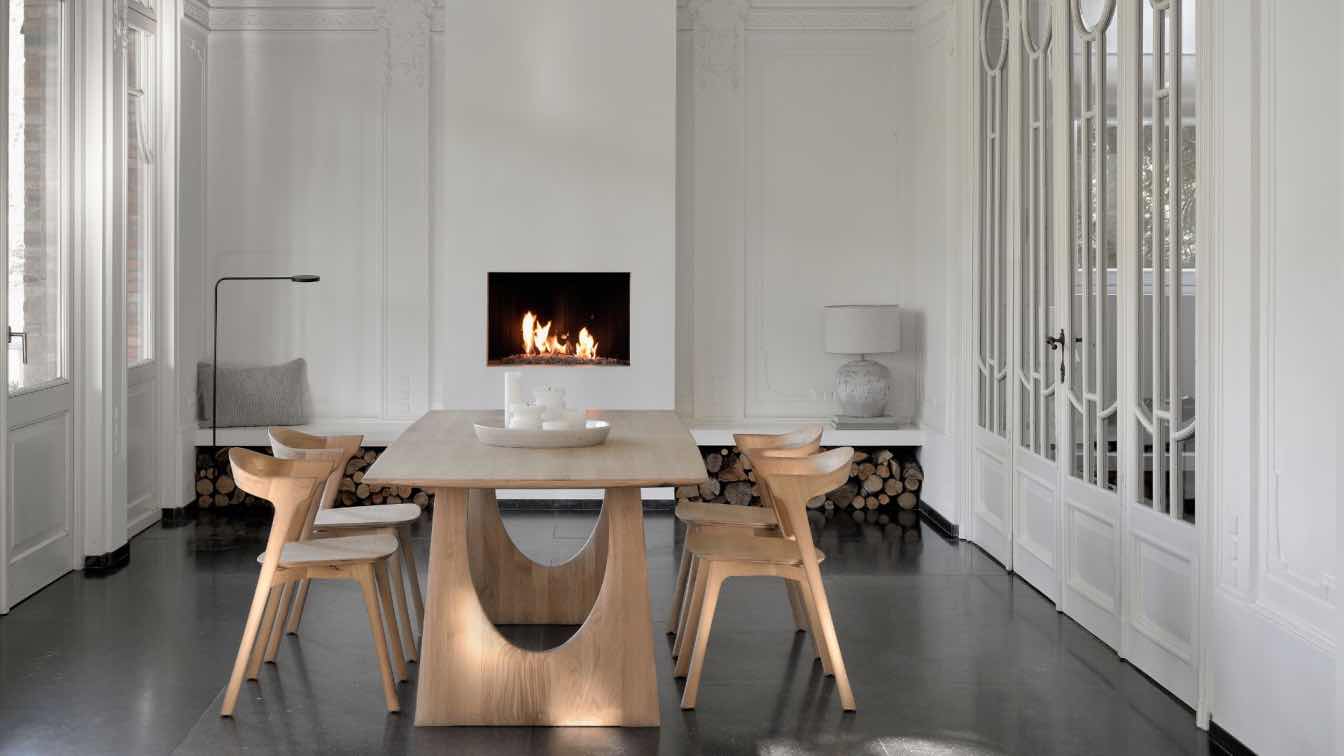The colonial architecture of the former convent of Carmen el Alto is transformed to house the Centro Gastronómico de Oaxaca, an educational and multidisciplinary space where culinary traditions and sustainability create a sensory experience.
An educational space where the past, present and future of Oaxacan gastronomic culture converge defines the most recent conversion and heritage recovery project of the RootStudio office in the former convent of Carmen Alto, in the historic center of Oaxaca.
The Oaxaca Gastronomic Center takes inspiration from the existing convent architecture, the rich local culinary legacy and endemic materials in one of the largest scale commissions in Mexico of this multidisciplinary architectural laboratory.
In this project—whose main objective is to create a multipurpose space that fosters community integration and harmonizes with areas for education and an exhibition area—a meticulous restoration of the original structure of the building (dating from the 16th century) has been carried out using traditional construction techniques and materials such as lime, brick, wood and green cantera stone, respecting both the original physical appearance and the architectural layout.

RootStudio’s synthesis, which preserves the materiality and typology of the building, establishes a dialogue between the urban environment and the pre-existing building to create a study center consisting of a administrative office, classrooms and public library; which coexist with commercial and recreational facilities, such as a restaurant, kitchen, cocktail and tasting rooms, gallery, cafeteria, multipurpose rooms, auditorium, courtyards, arcade gardens and retail premises.
Tradition and contemporaneity merge in this meticulous restoration carried out by RootStudio that follows the guidelines of the Oaxaca department of the National Institute of Anthropology and History (INAH), in order to preserve the primary features and the historical layout of the building.
A team of more than 20 designers and supervisors from the Instituto del Patrimonio Cultural del Estado de Oaxaca (INPAC), and the Instituto Oaxaqueño Constructor de Infraestructura Física Educativa (IOCIFED), were in charge of the execution of the work, which covers a total area of 5,000 square meters including 7,000 square meters of floor space.
Throughout the work, the splendor of the walls, ceilings, frescoes, vaulted ceilings, and the original levels of the spaces were recovered, while walled-up windows were opened. During the process, among the most important events was the discovery of an 18th-century sewer, which has been transformed into a space where tastings of ancestral mezcals and culinary experiences are held; and a diagonal window that resembles the one in the convent of the same order in San Ángel, Mexico City. In addition, the arcades of the goods handling yard were also restored and converted into a space foroutdoor events.

The outdoor areas made use of the original gardens and courtyards formerly in the care of the Order of the Discalced Carmelites. These were restored to return the building to its original appearance, since it had been used at different times as the Civil Registry of the State of Oaxaca, as well as a warehouse for Caminos y Aeropistas de Oaxaca, among others.
In order to contrast past and present, RootStudio installed an elevated contemporary element in raw steel, containing the industrial kitchens. In the parking lot, a two-story pavilion with steel pillars and brick vaults houses 12 commercial spaces and a public events hall that offers a privileged panoramic view of the mountains of the San Felipe nature reserve, the Church of Santo Domingo, and the Ethnobotanical Garden.
Rootstudio, led by Joao Boto Caeiro, is recognized for its comprehensive sustainability signature, which allows buildings to be incorporated into their surroundings and reduce their environmental impact, used products with zero net emissions of carbon dioxide, CO2, and chemical-free solutions, such as waterproofing products based on soap and alum, and installed a solar energy system.
For the interiors, in a gesture that promotes the work of local talent, the production of custom-made furniture was entrusted to master cabinetmakers and artisans, who used macuil wood, a tree popularly known as palo de rosa (rosewood) and recognized for its medicinal properties.

The artistic wealth of Oaxaca is present in the form of collaborations with the Juchitán-born artist Damián Flores, who created the mural “Men of Corn” to illustrate the different endemic species of this important food plant, and with Sabino Guisu, who designed the murals for the elevators that communicate all areas of the building.
The landscaping principle for the garden involved plants that are either edible or associated with cooking, including guajes, yuccas, zapotes, and magueys.
Accessibility and inclusion are fundamental principles in this project, as it seeks the interaction of individuals with their environment through facilities for people who have some type of disability.
The Oaxaca Gastronomic Center, located on Garcia Virgil street, joins RootStudio’s portfolio of buildings which includes Girl Move Academy in Mozambique, Africa—twice nominated by ArchDaily, in the “Building of the Year” and “Educational Architecture” categories—and Hotel Sin Nombre, Flavia Luxury Hotel, Casa Mulata, the San Agustin Etla High School, the José F. Gómez and Gabriel López Chiñas libraries, and the Rancho Cebú distillery in Tlacolula de Matamoros, all located in the state of Oaxaca.








































































About
Based in Oaxaca City and directed by João Boto Caeiro, RootStudio was founded in 2010 as a multidisciplinary studio that encompasses architecture, design, illustration, painting, and sculpture.
Over more than a decade of work, RootStudio has forged a unique signature that distinguishes it for its striking projects in Mexico and other latitudes. Its portfolio showcases its versatility when it comes to the most varied types of projects, such as residential buildings, productive and educational centers, sites for leisure and hospitality, whose common denominator lies in their harmonious integration with the landscape and a total commitment to social responsibility.
Entering a work by RootStudio means finding oneself in a dynamic, emotional atmosphere, where the pared-back simplicity is the result of a deep reflection on the mission of contemporary architecture.





